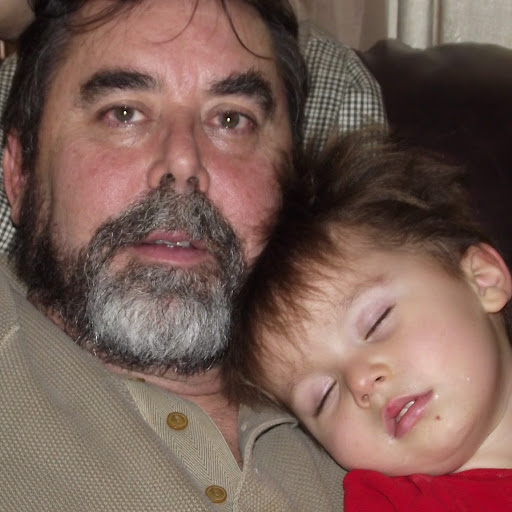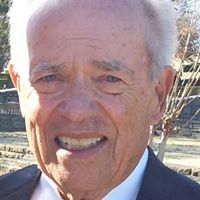Kenneth Craig Goodrich
age ~73
from Salt Lake City, UT
- Also known as:
-
- Kenneth C Goodrich
- Craig Goodrich
- Kenneth H
- Phone and address:
-
3475 Cummings Rd, Salt Lake City, UT 84109
8014740173
Kenneth Goodrich Phones & Addresses
- 3475 Cummings Rd, Salt Lake Cty, UT 84109 • 8014740173 • 8014841523
- Salt Lake City, UT
- Fruitland, UT
- Pasadena, CA
Us Patents
-
Externally Directed Anastomosis Systems And Externally Positioned Anastomosis Fenestra Cutting Apparatus
view source -
US Patent:6551334, Apr 22, 2003
-
Filed:Dec 14, 2000
-
Appl. No.:09/736781
-
Inventors:Duane D. Blatter - Salt Lake City UT
Kenneth C. Goodrich - Salt Lake City UT
Mike C. Barrus - Bountiful UT
Bruce M. Burnett - Salt Lake City UT -
Assignee:Integrated Vascular Interventional Technologies, LC - Salt Lake City UT
-
International Classification:A61B 1732
-
US Classification:606153, 606170, 606184, 600567
-
Abstract:Anastomosis procedures and anastomosis cutting procedures are achieved with an anvil apparatus that is externally positioned through the wall of a vessel into the vessel lumen. The externally positioned anvil apparatus has an anvil that engages a cutter to form a vessel opening. The anvil is larger than the cutter to enable the vessel to be cut as it is compressed between the cutter and the anvil. The anvil may have a spherical engaging end for use with a cylindrical cutter for forming circular openings in a manner such that the anvil self centers. The anvil and cutter may also be adapted to form elliptical openings. The balloon may be solid or deployable.
-
Compression Plate Anastomosis Apparatus
view source -
US Patent:6569173, May 27, 2003
-
Filed:Dec 14, 1999
-
Appl. No.:09/460740
-
Inventors:Duane D. Blatter - Salt Lake City UT
Kenneth C. Goodrich - Salt Lake City UT
Mike C. Barrus - Bountiful UT
Bruce M. Burnett - Salt Lake City UT -
Assignee:Integrated Vascular Interventional Technologies, L.C. - Salt Lake City UT
-
International Classification:A61B 1704
-
US Classification:606153, 606156, 606184
-
Abstract:Compression plates and vascular anvils for anastomosis of structures including end-to-end and end-to-side anastomosis. Vascular anvils cooperate in the opening of the anastomosis fenestra, engagement by a compression plate and subsequent eversion of the anastomosis fenestra contour, and also in establishing the contact engagement of the anastomosed structures. Compression plates hold anastomosed structures while permitting their dilation and keeping the anastomosis leak-proof. One of the compression plates assists in the eversion of the anastomosis fenestra contour. These compression plates and vascular anvils can be used with or without catheterization in minimally invasive interventions.
-
Externally Positioned Anvil Apparatus For Cutting Anastomosis
view source -
US Patent:6626921, Sep 30, 2003
-
Filed:Oct 31, 2001
-
Appl. No.:10/003956
-
Inventors:Duane D. Blatter - Salt Lake City UT
Kenneth C. Goodrich - Salt Lake City UT
Michael C. Barrus - Centerville UT
Bruce M. Burnett - Salt Lake City UT
Nemo J. Tullius - Salt Lake City UT -
Assignee:Integrated Vascular Interventional Technologies, L.C. - Salt Lake City UT
-
International Classification:A61B 1732
-
US Classification:606153, 606170, 606184, 600567
-
Abstract:The present invention is directed to a cutting apparatus for cutting an opening in a vessel for subsequent anastomosis. The cutting apparatus includes an anvil, an anvil pull and a cutter. The anvil is inserted through a small incision at the anastomosis site and brought into contact with the interior wall of a vessel so that the anvil distends the wall of the vessel. The cutter is then urged against the portion of the vessel wall that is distended by the anvil to form an opening in the vessel wall.
-
External Anastomosis Operators And Related Systems For Anastomosis
view source -
US Patent:6652542, Nov 25, 2003
-
Filed:Dec 14, 2000
-
Appl. No.:09/737005
-
Inventors:Duane D. Blatter - Salt Lake City UT
Kenneth C. Goodrich - Salt Lake City UT
Michael C. Barrus - Centerville UT
Bruce M. Burnett - Salt Lake City UT -
Assignee:Integrated Vascular Interventional Technologies, L.C. (IVIT, LC) - Salt Lake City UT
-
International Classification:A61B 1708
-
US Classification:606153, 606151
-
Abstract:Anastomosis procedures are achieved through the use of a system adapted for use with an intraluminally directed anvil apparatus having an anvil pull extending from an anvil. The system has an engager for engaging the anvil pull so that a vessel can be distended by the anvil as the anvil pull is pulled. The system has a cutter for forming an opening in a vessel. The system is adapted for use with a compression plate apparatus used to eversion and holding everted surfaces around the opening together. The system can also be used with an externally positioned anvil apparatus.
-
Intraluminally Directed Anvil Apparatus And Related Methods And Systems
view source -
US Patent:6726694, Apr 27, 2004
-
Filed:Dec 14, 2000
-
Appl. No.:09/736839
-
Inventors:Duane D. Blatter - Salt Lake City UT
Kenneth C. Goodrich - Salt Lake City UT
Michael C. Barrus - Centerville UT
Bruce M. Burnett - Salt Lake City UT -
Assignee:Integrated Vascular Interventional Technologies, L.C. (IVIT, LC) - Salt Lake City UT
-
International Classification:A61B 1710
-
US Classification:606139, 606153
-
Abstract:Anastomosis procedures are achieved through the use of an intraluminally directed anvil apparatus. The apparatus is inserted at a catheter site and is then positioned through the lumen of the blood vessel to a remote anastomosis site. The intraluminally directed anvil apparatus has an anvil pull extending from an anvil. At the anastomosis site, the anvil is extended through the wall of the vessel at an initial piercing. The anvil is too large to pass through the initial piercing so the anvil pull can be used to pull the anvil against the wall of the vessel and distend the vessel wall in preparation for being cut to form an opening. The apparatus is used with a cutter to form openings in a wall of a blood vessel. After the opening is formed then the vessel is joined with another vessel.
-
Soft Anvil Apparatus For Cutting Anastomosis Fenestra
view source -
US Patent:6743244, Jun 1, 2004
-
Filed:Oct 31, 2001
-
Appl. No.:10/003985
-
Inventors:Duane D. Blatter - Salt Lake City UT
Kenneth C. Goodrich - Salt Lake City UT
Michael C. Barrus - Bountiful UT
Bruce M. Burnett - Salt Lake City UT
Nemo J. Tullius - Salt Lake City UT -
Assignee:Integrated Vascular Interventional Technologies, L.C. - Salt Lake City UT
-
International Classification:A61B 1732
-
US Classification:606153, 606170, 606184, 600567
-
Abstract:The present invention is directed to a cutting apparatus for cutting an opening in a vessel for subsequent anastomosis. The cutting apparatus includes an anvil, an anvil pull and a cutter. The anvil is inserted through a small incision at the anastomosis site and brought into contact with the interior wall of a vessel so that the anvil distends the wall of the vessel. The cutter is then urged against the portion of the vessel wall that is distended by the anvil to form an opening in the vessel wall. The anvil has a surface that is softer than the cutter so that the cutter can cut completely through the vessel and depress into the anvil.
-
Locking Compression Plate Anastomosis Apparatus
view source -
US Patent:7160311, Jan 9, 2007
-
Filed:Dec 14, 2000
-
Appl. No.:09/736937
-
Inventors:Duane D. Blatter - Salt Lake City UT, US
Kenneth C. Goodrich - Salt Lake City UT, US
Mike C. Barrus - Bountiful UT, US
Bruce M. Burnett - Salt Lake City UT, US -
Assignee:Integrated Vascular Interventional Technologies, L.C. (IVIT LC) - Salt Lake City UT
-
International Classification:A61B 17/04
A61B 17/32 -
US Classification:606153, 606156
-
Abstract:Compression plate apparatus enables vessels to be joined together in various anastomosis configurations. The compression plates have locking components such as snap-fit components to maintain the plates together. The compression plate apparatus may be utilized with an intraluminally directed anvil apparatus or an eternally positioned anvil apparatus. One of the compression plates assists in the eversion of the anastomosis fenestra contour. One of the compression plates enables a graft vessel to be pre-everted so that the anastomosis fenestra contours are everted. The appparatus provides a structure that enables the vessels to be joined without being penetrated.
-
Systems For Forming An Anastomosis With An Anvil And An Apparatus Having At Least One Guide
view source -
US Patent:7901417, Mar 8, 2011
-
Filed:Oct 29, 2007
-
Appl. No.:11/927002
-
Inventors:Duane D. Blatter - Salt Lake City UT, US
Kenneth C. Goodrich - Salt Lake City UT, US
Michael C. Barrus - Bountiful UT, US
Bruce M. Burnett - Salt Lake City UT, US -
Assignee:Vital Access Corporation - Salt Lake City UT
-
International Classification:A61B 17/11
A61B 17/115 -
US Classification:606153, 606139, 606151, 606184
-
Abstract:Compression plate apparatus enables vessels to be joined together in various anastomosis configurations. The compression plates are guided to each other in a parallel orientation by guides. The compression plate apparatus may be utilized with an intraluminally directed anvil apparatus or an externally positioned anvil apparatus. One of the compression plates assists in the eversion of the anastomosis fenestra contour. One of the compression plates enables a graft vessel to be pre-everted so that the anastomosis fenestra contours are everted. The apparatus provides a structure that enables the vessels to be joined without being penetrated.
Name / Title
Company / Classification
Phones & Addresses
President
NIELCO ROOFING & SHEETMETAL, INC
5780 S 300 W, Salt Lake City, UT 84107
Resumes

Operations Manager
view sourceWork:
Priority Vending
Operations Manager
Operations Manager

Kenneth Goodrich
view source
Kenneth Goodrich
view source
Kenneth Goodrich
view source
Kenneth Goodrich
view sourceLocation:
United States

President At Citation Store, Corporation
view sourceLocation:
United States

Kenneth Goodrich
view sourceLocation:
United States
License Records
Kenneth Bernard Goodrich
License #:
MT003881T - Expired
Category:
Medicine
Type:
Graduate Medical Trainee
Googleplus

Kenneth Goodrich

Kenneth Goodrich

Kenneth Goodrich

Kenneth Goodrich
Youtube
Myspace
Flickr
Classmates

Kenneth Goodrich
view sourceSchools:
South Junior High School Newburgh NY 1979-1983
Community:
Judi Dempsey, Debbie Villafane, Jacqueline Ortiz, Theresa Faricellia

Kenneth Goodrich | German...
view source
Philadelphia College of A...
view sourceGraduates:
Kenneth Goodrich (1987-1989),
Jim Manos (1966-1970),
Kathy Most (1978-1982),
Fredric Snitzer (1968-1972)
Jim Manos (1966-1970),
Kathy Most (1978-1982),
Fredric Snitzer (1968-1972)

Wilbur Wright High School...
view sourceGraduates:
Kenneth Goodrich (1967-1971),
Irene Seidenschmidt (1961-1965)
Irene Seidenschmidt (1961-1965)

South Junior High School,...
view sourceGraduates:
Kenneth Goodrich (1979-1983),
Artilia Davis (1992-1996),
Shawn Matthews (1981-1985),
Mario Flores (1995-1999)
Artilia Davis (1992-1996),
Shawn Matthews (1981-1985),
Mario Flores (1995-1999)

Kenneth Goodrich
view source
Kenneth Goodrich
view source
Kenneth Goodrich
view source
Kenneth Goodrich
view source
Kenneth Goodrich
view source
Kenneth Goodrich
view source
Ken Goodrich
view source
Todd Kenneth Goodrich
view sourceGet Report for Kenneth Craig Goodrich from Salt Lake City, UT, age ~73














